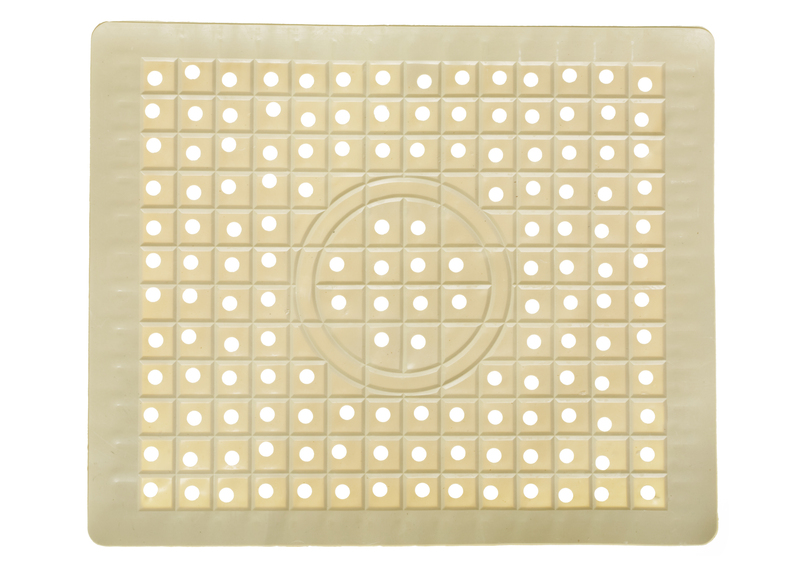Master the art of cleaning mouldy window sills
Posted on 08/09/2025
Master the Art of Cleaning Mouldy Window Sills: The Complete Guide
Are your window sills plagued by unsightly patches of mould? If so, you're not alone. Mouldy window sills are a common household problem, especially in areas with high humidity or poor ventilation. Learning how to clean mould off window sills not only improves your home's appearance but also safeguards your health and protects your property from structural damage.
This comprehensive guide will walk you through everything you need to know about removing mould from window sills effectively and safely. From identifying the causes to choosing the right cleaning method, we cover it all. Follow along to master the art of cleaning mouldy window sills once and for all!


Table of Contents
- What is Mould and Why Does it Grow on Window Sills?
- Why You Should Not Ignore Mould on Window Sills
- Tools and Supplies Needed for Mould Removal
- Step-by-Step Guide to Cleaning Mouldy Window Sills
- Natural vs. Chemical Mould Removers
- Tips for Preventing Mould Growth on Window Sills
- When to Call the Professionals
- FAQs about Cleaning Mouldy Window Sills
What is Mould and Why Does it Grow on Window Sills?
Mould is a type of fungus that thrives in damp, warm, and poorly ventilated conditions. The black, green, or grey patches you see on your window sills are colonies of microscopic spores.
Window sills are especially vulnerable to mould growth for several reasons:
- Condensation: Windows are often the coldest surfaces in a room, causing moisture from the air to condense and collect on the sills.
- Poor Ventilation: Inadequate airflow stops sills from drying out, letting moisture linger for longer periods.
- Leaking Windows: Damaged window seals or weatherstripping can allow rainwater to seep in.
- Organic Debris: Dust, pollen, and other organic matter can collect on window sills, providing food for mould spores.
Understanding why mould appears is your first step to a cleaner, healthier home.
Why You Should Not Ignore Mould on Window Sills
It may be tempting to brush off a little mould as just a cosmetic issue, but mouldy windowsills can lead to serious consequences:
- Health Risks: Mould releases allergens and toxins that can cause respiratory issues, asthma, skin irritation, and allergic reactions, especially in children or people with existing health conditions.
- Property Damage: Left unchecked, mould growth on window sills can damage wooden, painted, or even uPVC frames, leading to rot or discolouration.
- Spread to Other Areas: Mould spreads by releasing spores. Untreated patches on window sills can easily colonise surrounding walls, curtains, and ceilings.
- Devaluation of Your Property: Persistent mould problems can lower your property's value and make it harder to sell.
Dealing with mould on window sills promptly is crucial to maintaining both a healthy living environment and your home's structural integrity.
Tools and Supplies Needed for Cleaning Mould off Window Sills
Proper preparation is key! Before you start to clean mouldy window sills, gather the following tools and supplies:
- Protective gloves (disposable or reusable rubber)
- Protective mask (to prevent inhaling mould spores)
- Safety goggles
- Spray bottle (for your chosen cleaning solution)
- Microfiber cloths (several, as these are ideal for trapping spores)
- Old toothbrush or a small scrubbing brush
- Papertowels
- Bucket filled with warm water
- Cleaning solution (white vinegar, baking soda, hydrogen peroxide, or a commercial mould remover)
- Rubbish bag (for disposal of all contaminated materials)
Tip: Always wear protection when cleaning mould. Spores are easily inhaled or transferred onto skin.
Step-by-Step Guide to Cleaning Mouldy Window Sills
1. Preparation
- Open the window for maximum ventilation. If possible, set a fan to blow spores outside.
- Remove curtains, blinds, and any items on or near the window sill.
- Put on your gloves, mask, and goggles.
2. Initial Cleaning
- Use a dry paper towel to gently wipe away surface mould. Dispose of the towel immediately in a sealed bag.
- Avoid scrubbing at this point, as dry spores can become airborne more easily.
3. Apply the Cleaning Solution
- Choose your mould remover: white vinegar, commercial anti-mould spray, hydrogen peroxide, or a mix of baking soda with water.
- Pour or spray the solution generously onto the window sill, covering all mouldy areas and cracks.
- Allow the solution to sit and break down the mould for at least 10-20 minutes.
4. Scrub Away the Mould
- Use a scrubbing brush or old toothbrush to gently scrub the affected areas until all visible mould is removed.
- Use a fresh, damp microfiber cloth to wipe the area clean.
- Repeat spraying and wiping if necessary.
5. Rinse and Dry
- Wipe the sill with a damp cloth (soaked in clean water) to remove any residual cleaning product.
- Dry thoroughly with a fresh towel or leave the window open to air dry.
6. Final Steps
- Safely dispose of all used cloths and towels (double-bag if necessary).
- Clean your tools in hot, soapy water and allow to air dry.
- Launder or replace any curtains or blinds that were removed.
And that's it--you've mastered cleaning mould off window sills! Repeat this process whenever you notice new growth to keep your home mould-free.
Natural vs. Chemical Products for Cleaning Mouldy Window Sills
When tackling mould on window sills, choosing between natural and chemical solutions is important. Each has its pros and cons:
Natural Mould Removers
- White vinegar: Kills 80%+ of mould species and deodorises.
- Baking soda paste: Useful for scrubbing and absorbs moisture.
- Lemon juice: Mildly acidic with a pleasant scent.
- Hydrogen peroxide (3%): Effective for light mould and sanitising the area.
Pros: Non-toxic, safe for pets and children, environmentally friendly.
Cons: May require multiple applications for stubborn or thick mould.
Chemical Mould Cleaners
- Commercial anti-mould sprays: Often contain bleach or fungicides.
- Chlorine bleach: Powerful at killing and whitening, but can damage certain finishes.
Pros: Very effective on heavy, longstanding mould.
Cons: Can cause respiratory irritation, damage surfaces, and are hazardous if misused.
Tip: For regular cleaning and prevention, use natural products. For a one-off deep clean, a chemical solution might be required, but always follow safety instructions.
Expert Tips to Prevent Mould Growth on Window Sills
The best way to avoid having to clean mould off your window sills is to stop it from appearing in the first place. Here's how:
- Improve ventilation: Use extractor fans in kitchens and bathrooms. Open windows regularly to allow air circulation.
- Manage humidity: Aim for indoor humidity below 60%. Use a dehumidifier in damp rooms.
- Wipe condensation: Keep microfibre cloths handy and regularly wipe down window sills, especially after showers or overnight.
- Insulate your windows: Double glazing or thermal curtains reduce condensation and keep sills drier.
- Fix leaks promptly: Repair broken seals and gaps around the window to prevent water ingress.
- Avoid clutter: Remove potted plants or objects from window sills, as these trap moisture and encourage mould growth.
- Regular cleaning: Make it a routine to clean window sills with vinegar or a mild disinfectant at least monthly.
With diligent upkeep, you'll rarely see mould making a comeback.
When Should You Call Professionals for Mouldy Window Sills?
While most household cases of mouldy window sills can be handled yourself, sometimes professional intervention is advised:
- Large infestations: If mould covers an area larger than one square metre or returns quickly after cleaning, call a specialist.
- Structural damage: If sills, framing or drywall are soft, crumbling, or rotten, experts can assess moisture sources and repair damage.
- Health issues: If you or your family suffer from persistent respiratory problems, allergic reactions, or unexplained symptoms, professional mould remediation ensures safety.
- Hidden mould: Sometimes mould is growing behind panels, inside walls, or in cavities. Specialists have the tools to identify and eradicate hidden colonies.
Don't take risks if you're unsure--a professional assessment can save you money and protect your health in the long run.
Common Questions About Cleaning Mould on Window Sills
-
Can I remove all types of mould myself?
Usually, minor surface mould on sills can safely be handled at home. However, black mould (Stachybotrys chartarum) or large infestations need urgent professional attention. -
Does painting over mould solve the problem?
No--painting simply masks mould. The spores will grow through paint and continue to spread. Always thoroughly clean and treat before painting. -
How often should I check my window sills for mould?
Monthly inspections are ideal, particularly in winter or during humid weather. -
Will a dehumidifier prevent window sill mould?
A dehumidifier can drastically cut indoor humidity, making conditions less favourable for mould return.
Conclusion: A Mould-Free Home Starts With Clean Window Sills
Cleaning mouldy window sills doesn't have to be a dreaded chore. With the right supplies, knowledge, and a consistent prevention routine, you can keep your window sills looking spotless and your home environment healthy all year long.
Whether you use natural solutions like vinegar or baking soda, or chemical sprays for stubborn mould, acting fast is always the best policy. Remember, regular cleaning and vigilant maintenance are your best allies in the fight against window sill mould.
Now you know all there is to mastering the art of cleaning mouldy window sills--so roll up your sleeves and enjoy a brighter, healthier home!




